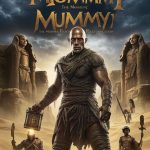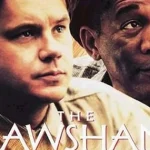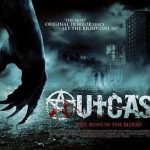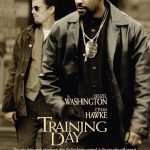“The dead land 2014”

“The Dead Lands” (2014) is a New Zealand action drama film directed by Toa Fraser. The film is notable for being the first feature-length film made entirely in the Māori language and showcases the rich culture and heritage of the Māori people. The story is set in a mythical version of pre-colonial New Zealand and features a blend of action, adventure, and spiritual themes.
Plot Summary
The film follows Hongi, a young Māori warrior, portrayed by Te Kohe Tuhaka, whose village is attacked by a rival tribe led by a powerful and ruthless leader named Wiremu (played by Lawrence Makoare). During the attack, Hongi’s father is killed, and his people are slaughtered, leaving him devastated and filled with rage. Seeking vengeance for his father’s death and the destruction of his home, Hongi embarks on a perilous journey through the treacherous landscapes of the dead lands, an area inhabited by malevolent spirits and dangerous foes.
To navigate this perilous journey, Hongi seeks the help of a fierce and enigmatic warrior named Kahu (played by Rena Owen), who is initially reluctant to assist him. Kahu, a woman with a mysterious past and exceptional combat skills, becomes Hongi’s mentor and ally as they confront various challenges, including hostile tribes and supernatural threats.
As the pair venture deeper into the dead lands, they encounter a series of trials that test their strength, resolve, and understanding of their cultural heritage. Along the way, Hongi must confront his own fears, learn the value of his heritage, and find a way to honor his father’s legacy.
Themes and Elements
- Cultural Identity and Heritage: The film delves into the significance of Māori culture, traditions, and spirituality. Through Hongi’s journey, audiences gain insight into the Māori worldview, beliefs, and the importance of ancestral connections.
- Revenge and Redemption: At its core, The Dead Lands is a story about revenge, but it also explores themes of redemption and the moral implications of vengeance. Hongi’s journey challenges him to confront his desires for revenge and understand the consequences of his actions.
- Spirituality and the Afterlife: The film integrates spiritual elements that reflect Māori beliefs about the afterlife and the presence of spirits. The dead lands serve as a metaphorical space where the living confront their past and the spirits of their ancestors.
- Survival and Strength: Hongi’s quest is not only about vengeance but also about survival. The film emphasizes physical and emotional strength, as he learns to navigate the harsh realities of his world.
Cinematography and Style
The Dead Lands features stunning cinematography that captures the breathtaking landscapes of New Zealand. The film’s visual style combines elements of traditional Māori culture with action sequences that highlight martial arts and combat. The use of practical effects and choreographed fight scenes adds a visceral quality to the film, making it both visually striking and engaging.
Reception
Upon its release, The Dead Lands received positive reviews for its storytelling, performances, and cultural representation. Critics praised Te Kohe Tuhaka’s portrayal of Hongi and Rena Owen’s performance as Kahu, noting the depth and complexity they brought to their characters. The film’s authentic depiction of Māori culture was also highlighted, making it a significant contribution to New Zealand cinema.
Legacy
The Dead Lands holds a special place in New Zealand film history as a pioneering work that showcases Māori language and culture. It has inspired subsequent films and projects focused on indigenous narratives and storytelling. The film has been recognized for its artistic achievements and continues to be celebrated for its cultural significance.
Cast and Crew
- Director: Toa Fraser
- Writers: Toa Fraser, based on a story by Toa Fraser and Lawrence Makoare
- Cast:
- Te Kohe Tuhaka as Hongi
- Rena Owen as Kahu
- Lawrence Makoare as Wiremu
- Xavier Horan as Taimo
- Dwayne Cameron as Te Mura
 Riki Hipa as Mako
Riki Hipa as Mako
Fun Facts
- The Dead Lands is the first feature film made in the Māori language to be distributed internationally, making it a landmark film in terms of cultural representation.
- The film includes elements of traditional Māori martial arts, known as Māori weaponry, which adds authenticity to the fight sequences.
- The film’s production involved extensive collaboration with Māori cultural advisors to ensure accurate representation of Māori customs and beliefs.
Conclusion
The Dead Lands stands as a powerful exploration of cultural identity, revenge, and the spiritual connections between the living and the dead. Its rich storytelling, combined with dynamic action and stunning visuals, makes it a noteworthy film that contributes to the representation of Māori culture in cinema.











